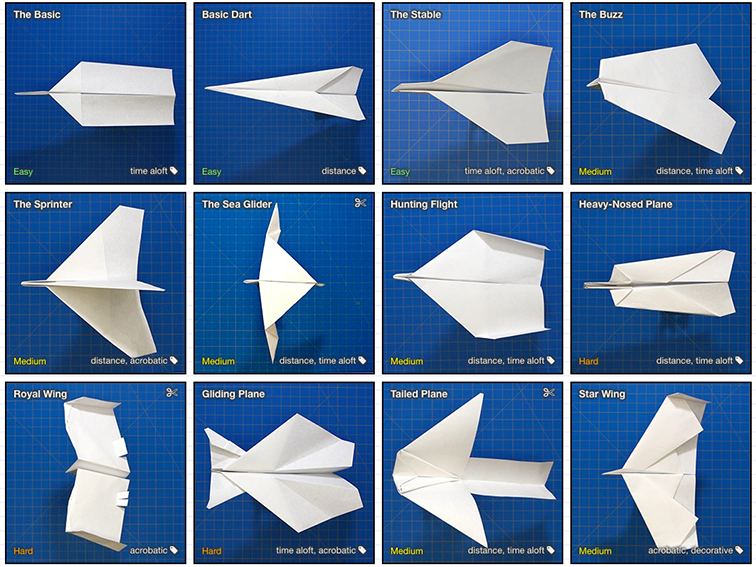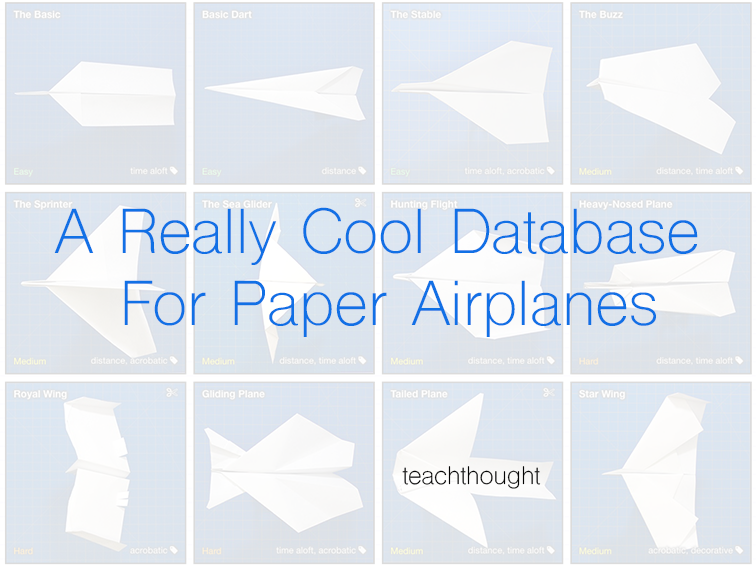A Cool Database For Paper Airplanes
by Terry Heick
When I was a kid, my dad taught me how to make paper airplanes.
I remember two designs in particular–a sleek ‘jet’ plane and a more-square stunt plane. I liked the stunt plane but was fascinated with the power and design of the jet version. It was so simple and pure. I can still remember the feel of the creases beneath my forefinger on my right hand, eyes studying my work closely, making sure the edges lined up just so. If it was off even a little, I had to start again.
There’s a lot more design that goes into duplicating existing paper airplane models than you’d think. First and foremost, the aforementioned precision of the folds. If the paper isn’t aligned perfectly, it won’t fly perfectly–and that sort of linear cause/effect is strangely fulfilling.
Second is the intensity of the creases. They can be soft, edged, or razor sharp. You can make them with your finger, thumb, or even a penny. Too sharp and the paper tears; too dull and the plane lacks–well, sharpness. And its flying suffers as a result.

Third is the characteristics of the paper. The size (normal 8.5/11″ works) matters, as does the ratio and shape. Color doesn’t matter much, but boy does the weight of the paper matter, as well as the general rigidity. My father was a photographer and I remember taking some of his menus for specific picture packages to make airplanes with. It was green or blue depending on the run, and the weight and rigidity were perfect for paper airplanes.
A fourth factor? Weighting and balancing. A piece of tape or small paperclip, well-placed, could be the difference between the plane going 10 feet or 100.
I learned all this playing with my dad’s design–taking the jet plane he showed me and tweaking it until I ended up winning a paper airplane contest in the 1980s at Oxmoor Mall. The prize? My dad and I got passes–and possibly some free food if I recall correctly–to King’s Island amusement park in Cincinnati, Ohio. I remember feeling proud that something I had done had allowed my dad to do something fun.
That was cool.
The Paper Airplane Database Part
There are other factors, of course, that contribute to the performance of a paper airplane, from the throwing motion to the actual design of the paper airplane. The above factors I described apply only to how many different ways the same paper airplane can be made–and why the same paper airplane design can work well for one person and less so for another.
With that in mind, take a look at this paper airplane database–a motherlode of cool designs, from origami to trick and stunt to performance.
You can find the full paper airplane database here.

